
Camera obscura, 1646 Stock Image C045/5173 Science Photo Library
A camera obscura is a room with a hole (or lens) in a wall that projects a reverse image onto the opposite wall. The idea of the Camera obscūra, which is derived from Latin for dark chamber or dark room, was conceived in prehistory, initially theorized around 500 BCE, and concretely developed in the Common Era.

Camera obscura illustration hires stock photography and images Alamy
Camera obscura in oko ↓ Prikaži teorijo [0] ↓ Primer 1. Nariši skico in opiši delovanje camere obscure. Odgovori na vprašanji: Ali je slika pokončna ali obrnjena? Od česa je odvisna velikost slike? Prikaži rešitev » Primer 2. Razloži, kako velikost odprtine kamere obskure vpliva na ostrino slike! Prikaži rešitev »
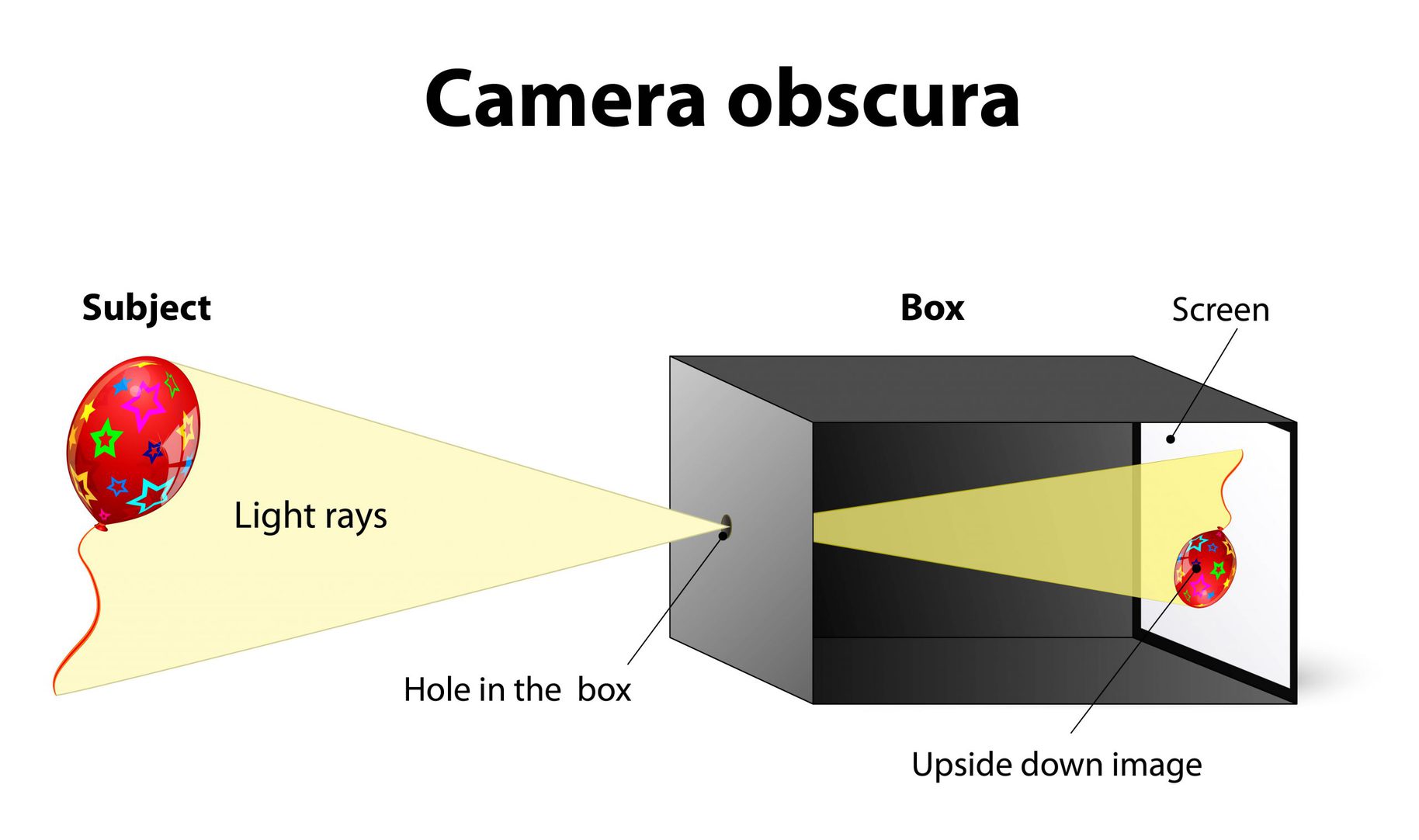
Camera Lucida DIY Guide & Beamsplitter Glass
The camera obscura was the predecessor of the photographic camera, but without the light-sensitive film or plate. The Italian landscape painters Canaletto (1697-1768), and Bernardo Bellotto (c. 1721-1780) are said by some art historians to have used the camera obscura to create perspective views of Venice and other cities too..
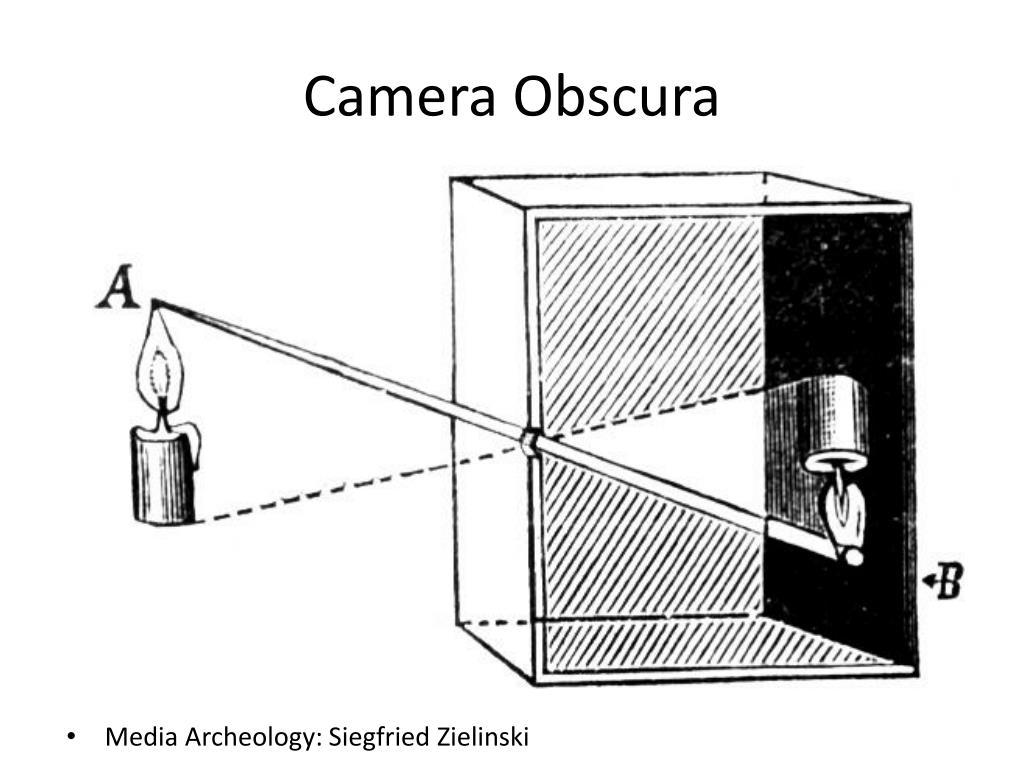
PPT Camera Obscura PowerPoint Presentation, free download ID4437337
Priroda i tehnika tamna komora (camera obscura), naprava u obliku kutije s točkastim otvorom ili sabirnom lećom na jednoj strani i zaslonom na suprotnoj strani, na kojemu se pojavljuje obrnuta slika vanjskoga predmeta.

The Beginning & Camera Obscura Photofocus
Camera obscura — and before them, pinhole cameras — have been around for several hundred years. But it wasn't until the early 1600s CE that we were able to manufacture lenses of high enough quality to create more flexible cameras with larger openings (apertures). That meant letting in more light to create brighter, higher-quality images.

Camera obscura
Svetloba od predmeta (temno zelena puščica) vpada v oko in se prek očesne leče usmeri na mrežnico — zaslon, poln vidnih čutnic. Od tam zbrane informacije prek vidnega živca potujejo do možganov, ki nam ustvarijo sliko okolice. Slika predmeta (svetlo zelena puščica) je vedno prava, obrnjena ter pomanjšana.

In the early days of photography, people relied on pinhole cameras to take pictures. Pinhole
Camera obscura, ancestor of the photographic camera. The Latin name means 'dark chamber,' and the earliest versions, dating to antiquity, consisted of small darkened rooms with light admitted through a single tiny hole. The result was that an inverted image of the outside scene was cast on the opposite wall.

How it Works Camera Obscura and World of Illusions Edinburgh
The term "camera obscura" can refer to any dark place in which a projected image is visible. In its simplest form, the camera obscura is merely a dark room with a single aperture. When light falls through this aperture, it will project an image on the opposite wall of the room. This phenomenon can take place naturally, and descriptions of.
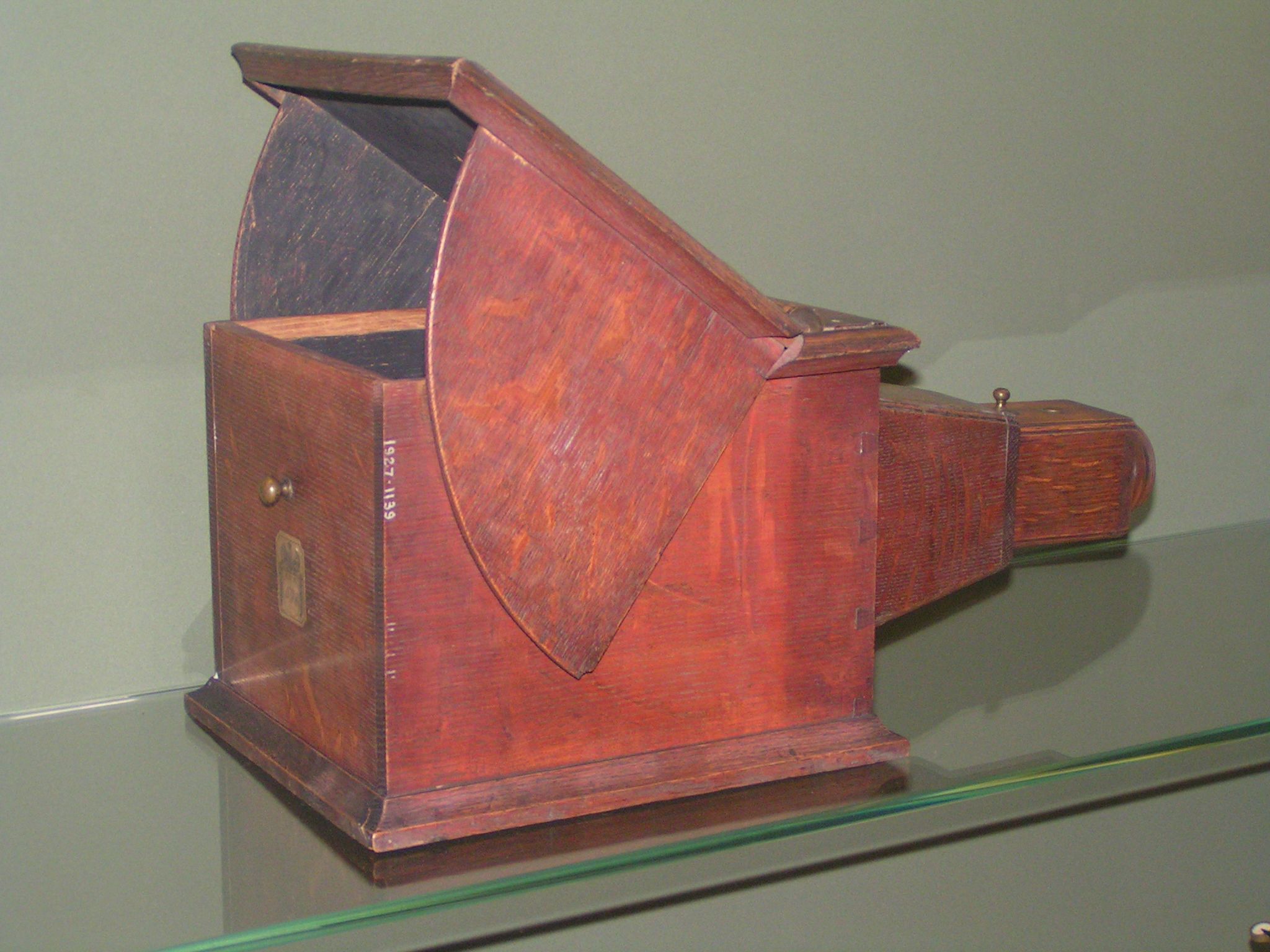
Камераобскура это... Что такое Камераобскура?
The camera obscura or pinhole camera is the simplest image forming system. It consists of a closed box with a pinhole on one side. An inverted image is cast on the opposite side of the box as shown in Figure 3.2.1. If the hole is too large, the image is very blurred. At the cost of less light, the image can be made sharper by reducing the.
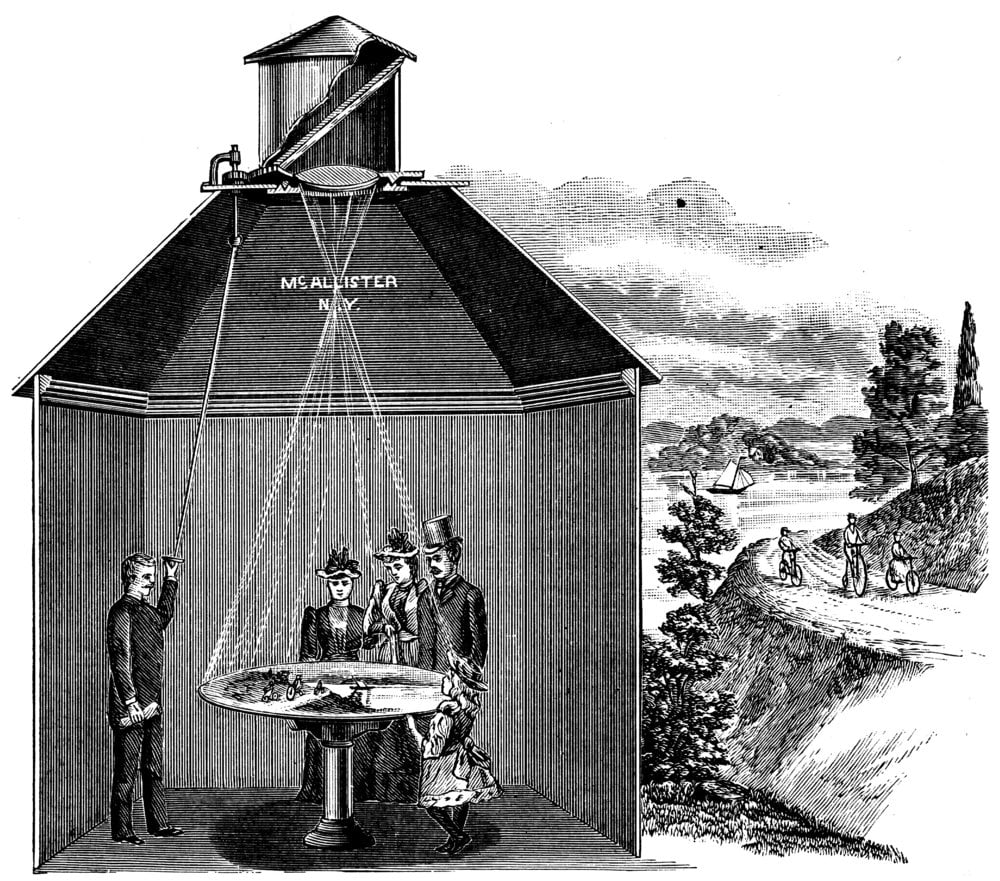
Camera Obscura Article University of Pretoria
Camero obscuro so uporabljali številni umetniki pri realističnih in natančnih izrisih najrazličnejših motivov. Projicirana slika je služila kot osnova številnim slikarskim mojstrovinam.
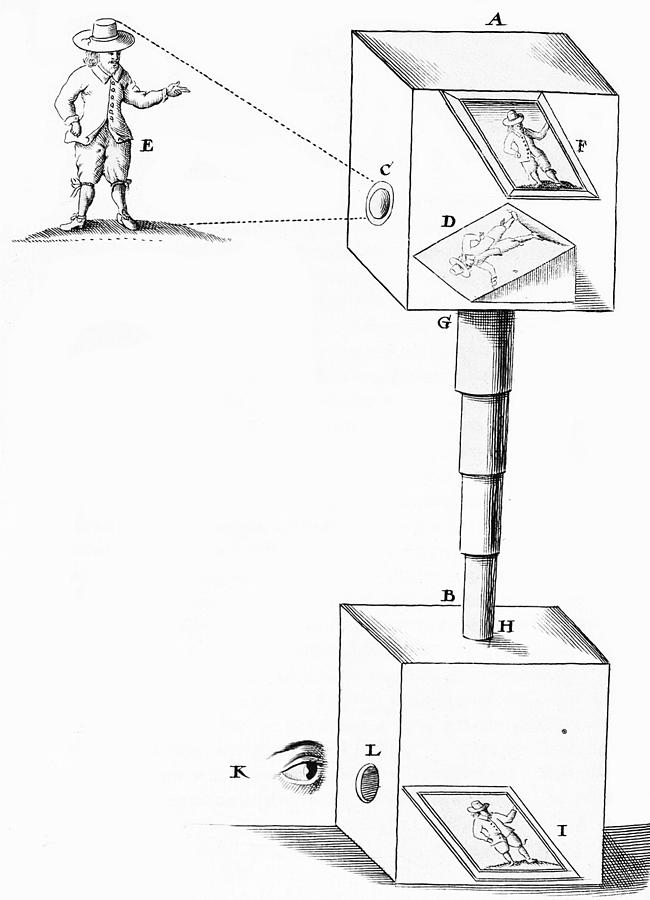
Camera Obscura, 1664 Photograph by Science Source Pixels
Model očesa in camera obscura Leče so optične priprave, s katerimi se srečujemo vsak dan. So tudi sestavni del našega vidnega organa — očesa, kar bomo podrobneje spoznali v tem poglavju. Ker so leče ključen element pri nastajanju slike v našem očesu, ponovimo nekaj njihovih značilnosti, ki smo jih spoznali v prejšnjem poglavju.

Camera obscura used to study sunspots Stock Image C026/7360 Science Photo Library
Gintarė Romeikaitė. Radvilų rūmų muziejus (Vilniaus g. 24, Vilnius) kviečia mokytojus ir 7-8 klasių mokinių grupes į integruotas pamokas „Camera obscura - tamsioji kamera". Integruotos pamokos vyksta muziejaus kūrybinėje dirbtuvėje ir ekspozicijoje „Vakarų Europos dailė XVI-XIX a.".

La caméra obscura
Camera obscura Porta Giovanni Battista nápolyi tudós (1534-1615) lyukkamerája, a róla elnevezett Porta-féle sötétkamra (latin nevén: camera obscura), egy megfelelő méretű, egyik lapjának közepén lyukkal ellátott doboz, amely az előtte álló tárgyak fordított és kicsinyített képét szolgáltatja a doboz hátsó, homályos üvegből készült falán.

Camera Obscura Science Museum Group Collection
Paris, 1863, p. 404, n° 245. In 1604, the term "camera obscura" (in Italian=dark room), was coined by the German astronomer Johannes Kepler (1571-1630) who developed the first portable camera obscura in the form of a tent (fig. 13), with a sheet of paper inside onto which the camera's image could be projected.
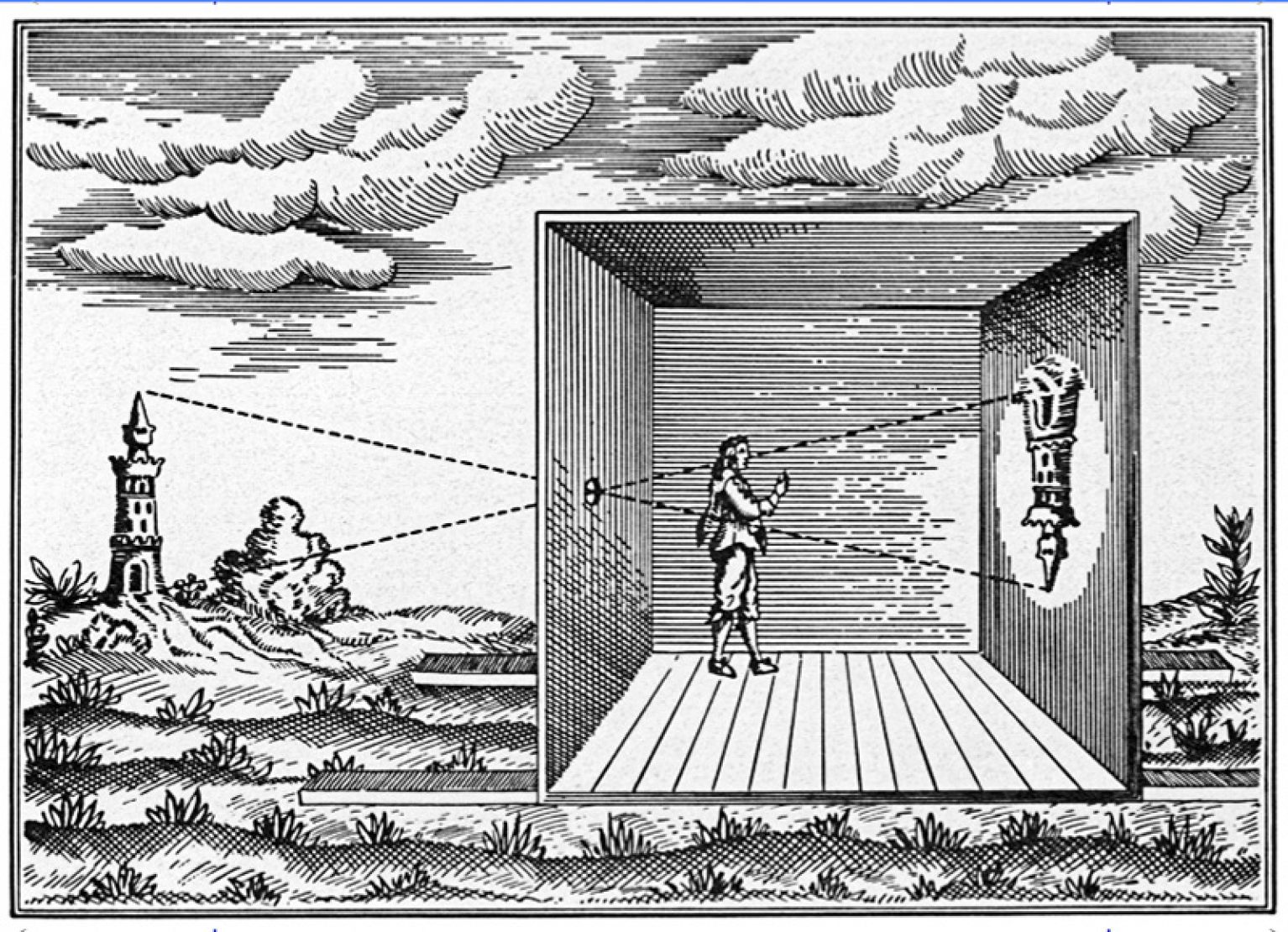
Różne oblicza fotografii Lekcje z polskiego
Camera obscura (meaning "dark room" in Latin) is a box-shaped device used as an aid for drawing or entertainment. Also referred to as a pinhole image, it lets light in through a small opening on one side and projects a reversed and inverted image on the other. How It Works

Camera obscura Virtual Tours
A camera obscura fényképezésre használható sötétkamra, lényegében doboz, amelynek az egyik oldalán kis nyílás van. A jelenség igen régóta ismert. Egy elsötétített szobában, ha szerencsénk van, a redőny (esetleg függöny) egy nyílásán keresztül a kinti, erősen megvilágított látvány megjelenhet a szemközti falon fordított állásban.